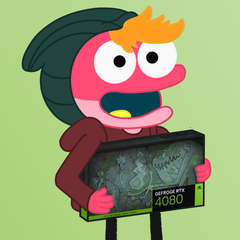rj45 types/pinouts etc??
There's T568A (starts with green) and T568B (starts with orange)
With 100 mbps ethernet cards, if you want to create a direct connection between two computers, you need a crossover cable, where the TX pair from one PC goes into the RX input of the other PC. Hence why the two pairs of wires are switched in one connector.
I'm not 100% sure but I think the reason why the B version is preferred in cables made automatically (patch cables etc) is because the way the pairs are twisted, it's easier for automated machines to untwist pairs, and rearrange the wires.


With 1 gbps or higher ethernet cards, all four pairs are used to transmit data, so all four pairs would have to be twisted, but 1 gbps and higher ethernet cards are supposed to have automatic pair detection making crossover cables no longer needed.
but if you want to actually make a crossover gigabit cable it would look like this, either one of the two versions would work.



















Create an account or sign in to comment
You need to be a member in order to leave a comment
Create an account
Sign up for a new account in our community. It's easy!
Register a new accountSign in
Already have an account? Sign in here.
Sign In Now